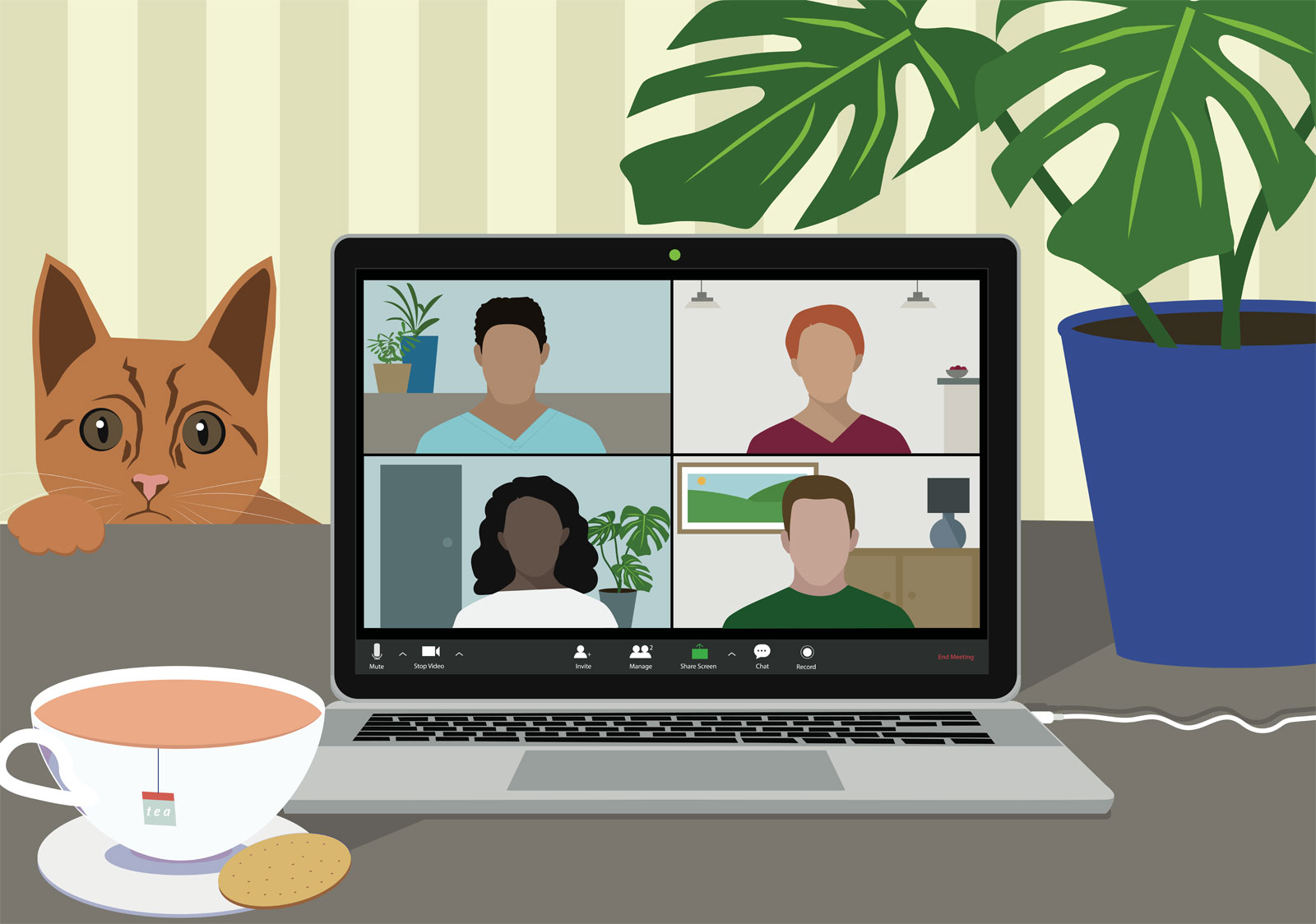Like many of us, I work virtually a lot more these days. I also encounter lots more advice on working virtually and struggle to make sense of the gazillions of ‘hints and tips’ coming my way. There are too many for me to remember, some I don’t quite ‘get’, and some I don’t much like. After a decade of facilitating in the virtual space, I know that dogmatic, one-size-fits-all ‘rules’ don’t help me there any more than they help me facilitate in the physical space. What I do find helpful are honest, open, ‘intimate’ conversations about our experience of working together in whatever space we find ourselves. As we develop our virtual work practices, at breakneck speed for many, I’d say it makes sense to have some conversations about whether we’re taking account of what we’ve learned over a lifetime of developing our physical work practices.
To provoke such conversations, I offer two “Virtually Rules” for working virtually. They’re “Rules” in the sense that they provoke useful conversations and provide guidance. They’re “Virtually Rules” in that they seem to hold true virtually all of the time and provide insight when it seems like they don’t.
- The Virtually Rule of More:
Consider the virtual space to be ‘more’ than the physical space, not ‘less’ - The Virtually Rule of Reverse-checking:
If you wouldn’t do something in the physical space, don’t do it in the virtual space
The Virtually Rule of More
There really is ‘more’ in the virtual space, both of what you want and what you might not. There are more breakout rooms, more shareable documents and more time to be productive rather than travelling. But there are also more frustrations around joining and navigating virtual platforms; more suspicion/doubt/mistrust about what might be going on off-screen; and more to learn as we plan and execute more interactions in less familiar virtual spaces.
The “Virtually Rule of More” can help in a couple of ways. First, it sets an expectation that more will, indeed, be needed, in the virtual space so it’s not a surprise or disappointment when it does. Assigning a ‘Technician’ role in virtual interactions to take care of Participants’ issues around joining and navigating virtual platforms may look like ‘more’ work, but not to the Leader/Facilitator and Participants who can now focus on human interaction rather than technical distraction.
Second, being explicit that working in the virtual space will be ‘more’ than working in the physical space provokes conversations about how those dimensions of ‘more’ can be addressed e.g., a conversation about control and power might start “I notice virtual platforms generally give Hosts vastly more control and power over Participants than they would have over them in a physical space. We should probably talk about how that’s experienced and what to do about it.”
The Virtually Rule of Reverse-checking
In conversations about how the virtual space is experienced, “if you wouldn’t do something in the physical space, don’t do it in the virtual space” is a useful provocation. The most vivid way I’ve found to understand how the virtual space is experienced is to explicitly translate working practices from the virtual space into equivalent practices in the physical space and see how we all feel about them: ‘reverse-checking’ as I call it.
For instance, by default on my virtual platform I can always see myself onscreen. That’s great early on to check I look OK, but then I tend to keep looking at myself, rather than other people. ‘Reverse checking’ that practice into the physical space, it would be like me checking my appearance in a mirror before a meeting but then taking that mirror into the meeting, plonking it down and staring at it. Would I do that physically? No. Conclusion for my virtual working practice: select ‘Hide self-view’ as soon as I’m happy with my appearance on-screen.
Applying the “Virtually Rule of Reverse-checking” sorts out which ‘hints and tips’ are appropriate to which contexts. I strongly invite you to reverse-check your own virtual practices back into your equivalent physical working environments: notably around muting, use of the Chat Box, application of Breakout Rooms, use of virtual backgrounds and physical positioning relative to webcam.
When doing so, remember that the way a virtual practice reverse-checks into a physical space depends specifically on the norms and nature of that physical space. If your physical meetings have a ‘laptops down and phones off’ norm, there’s a conversation to be had about how/if you use your virtual platform’s Chat Box. Fulsome use reverse-checks into a physical meeting room in which everyone can now furtively (and invisibly!) text each other, fundamentally undermining the ‘phones off’ norm. There’s a further conversation to be had about how to do ‘laptops down’ when they’re necessarily up. Investing in some explicit reverse-checking conversations about your virtual practices guards against your sleepwalking into doing things your physical experience tells you not to.
When the Virtually Rule of More looks like it doesn’t apply, it provides insight (and still applies!)
Something the virtual space can’t have ‘more’ of than the physical space is physicality. On arrival at a physical event, the physical setup signals a lot about what to expect. Rows of seats and a big screen signal a presentation. A circle of seats and little else signals a workshop. In the virtual space, then, ‘more’ is needed to signal what kind of interaction Participants can expect.
There’s more to come
I’ll say more in future blogs about the implications of the Two Virtually Rules for virtual facilitation, evolving virtual working and fostering intimacy in the virtual space. For now, though, I’d love to hear what you think of them, what dimensions of ‘more’ you spot in the virtual space and how reverse-checking your practices is helping you out, especially regarding my ‘strong invitations’ above.



